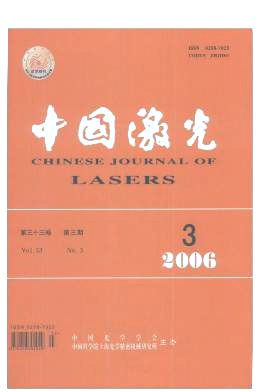中国激光, 2006, 33 (3): 408, 网络出版: 2006-04-20
新一代超低碳贝氏体钢激光焊接热影响区的组织和性能
Microstructure and Mechanical Properties of Laser Welded Heat-Affected Zone in New Ultra-Low Carbon Bainitic Steel
激光技术 超低碳贝氏体钢 激光焊接 热影响区 组织 韧性 laser technique ultra-low carbon bainitic steel laser welding heat-affected zone microstructure toughness
摘要
采用激光焊接和熔化极活性气体保护焊接(MAG焊接)两种方法对800 MPa级新一代超低碳贝氏体(NULCB)钢进行了焊接,研究了焊接热影响区(HAZ)组织、性能的变化规律。实验结果表明,热影响区组织均为贝氏体板条和马氏体-奥氏体(M-A)组元组成的粒状贝氏体;在实验所采用的不同热输入情况下,随着热输入的增大,马氏体-奥氏体组元的平均宽度、总量、形状因子增大,但其线密度减少;在合适的激光焊接条件下,热影响区韧性高于母材;激光焊接接头显微硬度随热输入的增大而减小,均高于母材,未出现明显的软化区。
Abstract
800 MPa grade new ultra-low carbon bainitic (NULCB) steel was welded by laser welding and melt-active gas (MAG) welding, and the microstructure and mechanical properties of the heat-affected zone (HAZ) were investigated. The experimental results indicate that the microstructure of the HAZ is only granular bainite which consists of the bainite lath and the martensite-austenite (M-A) constituent. As the heat input that was adopted in the experiment increases, the average width, gross and shape parameter of M-A increase, but the line density decreases. The toughness of HAZ is higher than base metal under appropriate laser welding conditions. With the heat input of laser welding increase, the hardness of welded joint decreases, but it is higher than that of the base metal, indicating no softened zone appeared after laser welding.
赵琳, 陈武柱, 张旭东. 新一代超低碳贝氏体钢激光焊接热影响区的组织和性能[J]. 中国激光, 2006, 33(3): 408. 赵琳, 陈武柱, 张旭东. Microstructure and Mechanical Properties of Laser Welded Heat-Affected Zone in New Ultra-Low Carbon Bainitic Steel[J]. Chinese Journal of Lasers, 2006, 33(3): 408.





